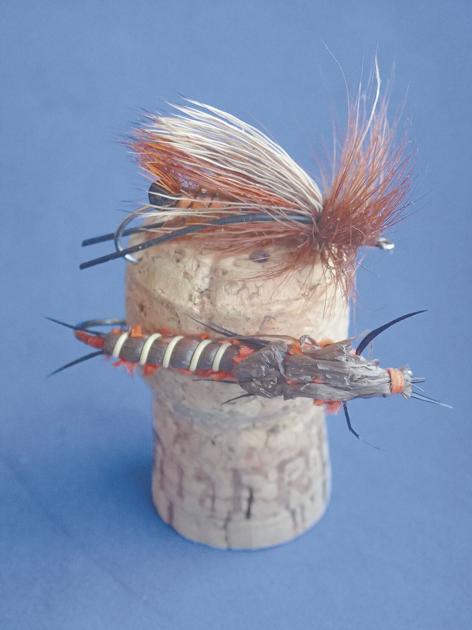Trout eagerly snatched up the simple offering cast into the shallow pool. Many, many years ago, sort of like the “build it and they will come” philosophy, I would throw out most any fly from the box and the fish would bite. Such an easy day has happened before. But there was something different on that day years ago.
More specifically, there was something different about the fly on that day. A fly like no other.
Visit your local sporting goods store and you will find rows of boxes filled with hooks covered in feathers and fur. But the fly of choice that day didn’t come from under the soft fluorescent lights of a store display.
You couldn’t have purchased it anywhere because it came from my kitchen table. It came into being out of a fly tying kit of cheap tools and materials purchased as an experiment. Once on the river, the trout proved the experiment a success.
Although I didn’t realize it when I first stared learning to tie flies, the best reason to learn is that tying actually improves your fishing. Trout are motivated by several factors, not the least of which is the search for food. A better understanding of what trout eat will make one a more effective fisherman.
As one learns tying, one also learns about the kinds of insects trout feed on, where these insects can be found, their various colors, shapes, sizes, forms, and the various stages of their life cycles. And it is not just insects we imitate, but other trout food such as small fish or beetles. All of this information is useful for fishing.
Most patterns are very easy to tie and to tie well. Other patterns can be complicated, using material or techniques that make a simple craft difficult. But don’t let the seemingly difficulty dissuade you from getting started. Try the simple first.
Not much in the way of equipment is needed to tie a number of effective patterns. However, fishing and fly tying are like most of our obsessions in that one can indeed buy and buy and still not have it all. But one doesn’t have to start with it all to tie a fly that you can catch a fish on during your next outing.
A minimum tool assortment features a vise, scissors, bobbin, a bobbin threader, and a bodkin. As with any hobby, there is always more. There are many specialty tools that can be added to your collection as needed. You can buy these tools in a kit or individually. In general, you get what you pay for.
A vise is the largest and single most expensive tool you will have, ranging from cheap to expensive. For the occasional tyer, the less expensive models are adequate. You can always get a better one later if you find yourself engrossed in the hobby and tying non-stop.
Good scissors are critical. Cheap scissors will work, but if there is any one tool you might spend a little more on at first, scissors would be it. In fact, you might even want two pairs. One better pair for 90% of your cutting, and a second pair for cutting heavier material and light wire, thus saving your better pair and keeping them sharp.
Scissors come in several different shapes, that is to say the shape of the handles themselves. They are of course available in the traditional configuration with two finger loops, but other specialized design loops may fit your fingers better, thus making them easier to use.
A bobbin is a critical but inexpensive tool. The cheap ones will work, but your tying creations will be much more durable if you use a quality bobbin. The bobbin holds a spool of thread, guiding the thread into small and precise placements. Getting the thread placed right is often the key to durable and life-like flies. Tension by the bobbin on the spool must be just right so that you can concentrate on tying rather than unraveling thread.
In the photo above are two flies I tied earlier this year and used this past summer for fishing the famed orange stonefly hatch on the Gunnison River in June. There are many successful patterns for this particular hatch, but these work for me. The top one is the dry version and the bottom the nymph version of the orange stonefly. They are ragged because they are well-used, not a photo of the fresh ones just off the vise. Part of the fun is to catch a fish on a fly you tied.
Since those trout are hiding away for the winter, now would be a good time to get started fly tying. So what does it take to create such a concoction that a fish will actually believe is something to eat? Probably less than you think. Think simple at first, get some basic fly tying tools and materials, and then use your own fly to catch a fish.
Credit: Source link































